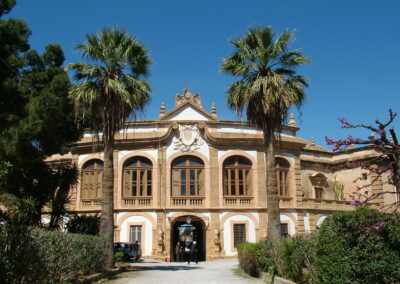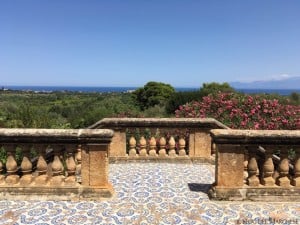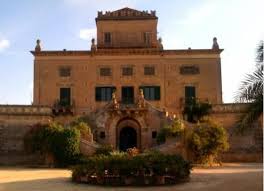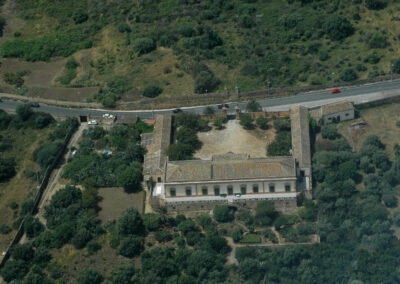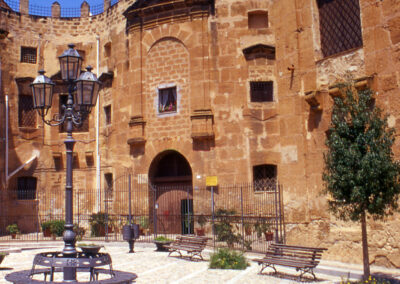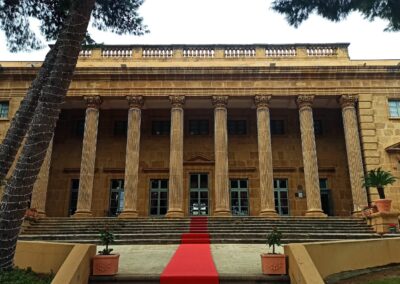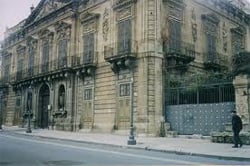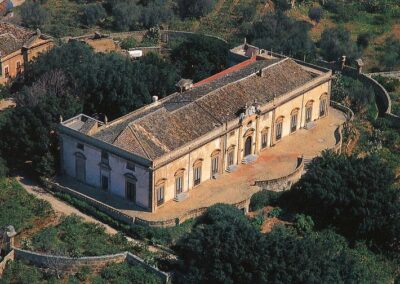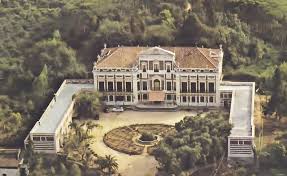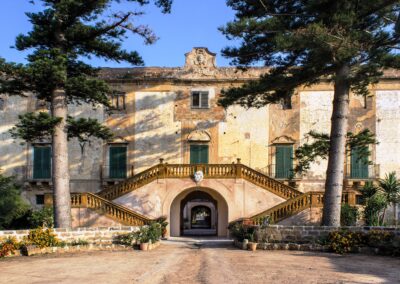Villa Palagonia
It is the most important emblem of suburban Baroque architecture in Sicily. Conceived as a place of recreation and holiday, it was built in 1715 by the prince of Palagonia, Francesco Ferdinando Gravina and Bonanni. The villa can be reached via a long avenue, after passing through two triumphal arches, the first of which, originally called the “three gates”, is no longer visible; the second corresponds to the current arch of the Holy Trinity, recently restored by the municipal administration. It was Francesco Ferdinando II, nephew of the prince, who designed the numerous grotesque statues and the bizarre furnishings of the villa. Gnomes, centaurs, dragons, players of curious instruments, mythological figures and monsters of all kinds adorn the palace and surround the villa. (Visitable)
Hours and Prices:
https://www.villapalagonia.it
Tel.: 091 932088
Mail: villapalagonia@villapalagonia.it
Insights
Villa Palagonia is the most important emblem of suburban Baroque architecture in Sicily. Conceived as a place of recreation and holiday, it was built in 1715 by the prince of Palagonia, Francesco Ferdinando Gravina and Bonanni. The construction of the original building was entrusted to the architect Don Tommaso Maria Napoli, and then to the architect Agatino Daidone. The villa can be reached via a long avenue, after passing through two triumphal arches, the first of which, originally called the “three gates”, is no longer visible; the second corresponds to the current arch of the Holy Trinity, recently restored by the municipal administration. It was Francesco Ferdinando II, nephew of the prince, who designed the numerous grotesque statues and the bizarre furnishings of the villa. Gnomes, centaurs, dragons, players of curious instruments, mythological figures and monsters of all kinds adorn the palace and surround the villa. The palace is accessed by climbing a majestic external staircase in Billiemi marble. Two large statues of dwarfs seem to guard the entrance opposite the main one, which can be accessed from Piazza Palagonia. The monstrous caricatures, which portray friends and visitors to palace entertainments, were created by the junior prince Gravina of Palagonia, perhaps in revenge against Fate, since he was an ugly and deformed man. Luxurious marbles sculpted by Gagini, depicting the prince and family members, decorate the walls of the wonderful reception hall. The ceiling, on the other hand, is entirely decorated with mirrors and painted glass. Decorated with beautiful colored marbles, mosaics and mirrors, artistic shelves and vases is also the covered loggia, much admired by visitors. Goethe recounts the strangeness of the building with indignation and wonder. One of these, for example, were the chairs, whose feet were sawn unequally so that they remained lame. Or Houel tells us that there were chairs and armchairs that leaned forward so much that you had to make a lot of effort to avoid slipping and falling. The caretaker himself warned to pay attention to the more solid chairs because pins and spikes were hidden under the velvets. The construction of the villa cost the prince of Gravina one hundred thousand scudi. Today the palace is a national monument and is privately owned. Or Houel tells us that there were chairs and armchairs that leaned forward so much that you had to make a lot of effort to avoid slipping and falling. The caretaker himself warned to pay attention to the more solid chairs because pins and spikes were hidden under the velvets. The construction of the villa cost the prince of Gravina one hundred thousand scudi. Today the palace is a national monument and is privately owned. Or Houel tells us that there were chairs and armchairs that leaned forward so much that you had to make a lot of effort to avoid slipping and falling. The caretaker himself warned to pay attention to the more solid chairs because pins and spikes were hidden under the velvets. The construction of the villa cost the prince of Gravina one hundred thousand scudi. Today the palace is a national monument and is privately owned.
In this category




